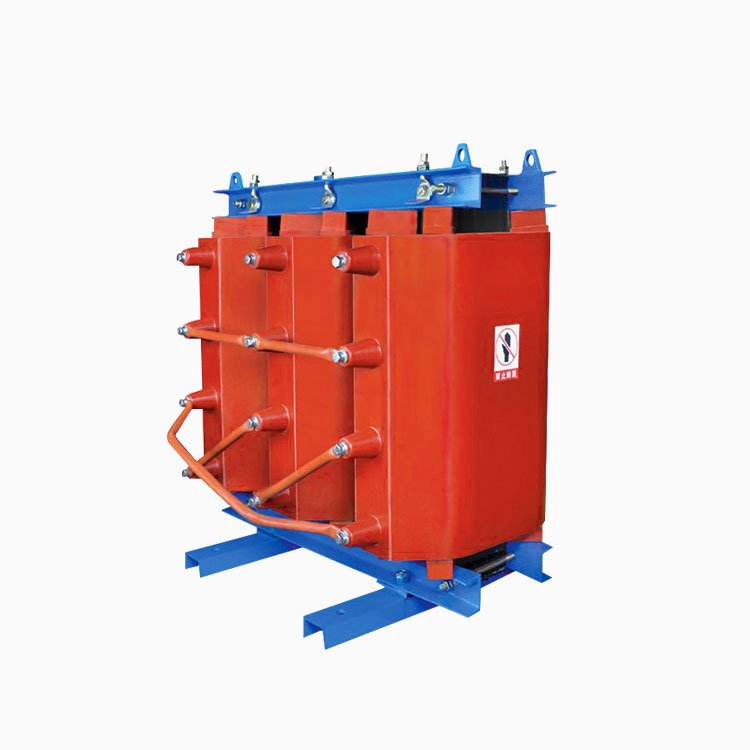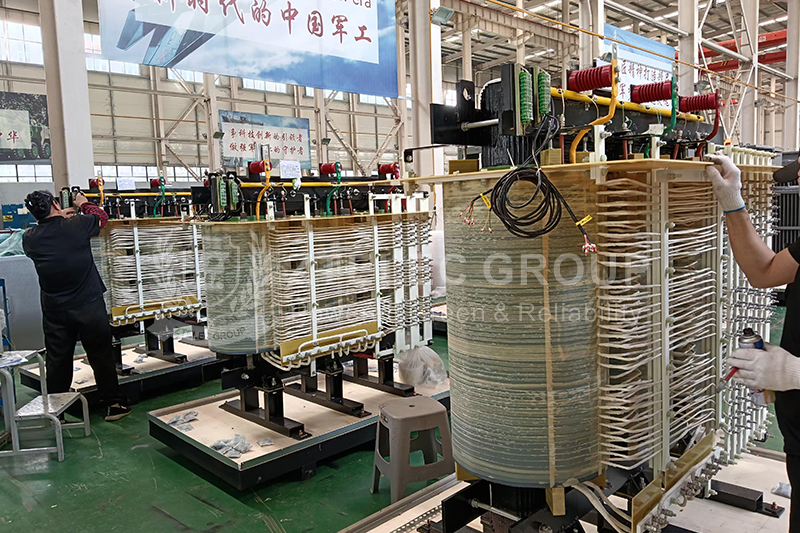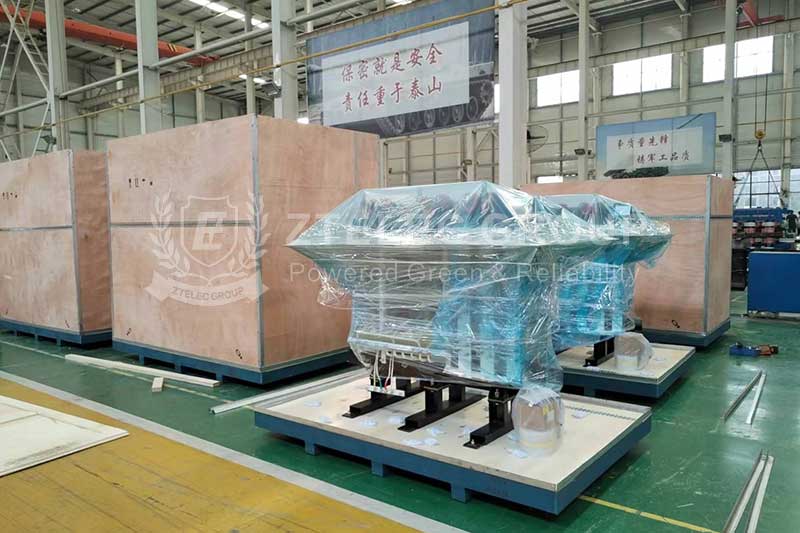Causes of transformer burnout and how to repair it
2024-07-08 14:45 | By: ZTELEC-www.ztelecgroup.com | 50click
What is a Transformer
A transformer is a passive electrical device that transfers electrical energy from one circuit to another through the process of electromagnetic induction. It is most commonly used to increase (‘step up’) or decrease (‘step down’) voltage levels between circuits.
The working principle of a transformer involves mutual induction between two or more windings (also known as coils) which allows for electrical energy to be transferred between circuits. When an alternating current passes through the primary winding (the input coil), it creates a continually changing magnetic field around the winding. If another winding (the secondary winding or output coil) is brought close to the primary winding, some portion of this changing magnetic field will link with the secondary winding. As this magnetic field is continually changing in its amplitude and direction, there must be a changing magnetic field linkage in the secondary winding. According to Faraday’s law of electromagnetic induction, this induces an electromotive force (EMF) in the secondary winding.
Whether the transformer increases or decreases the voltage level depends on the relative number of turns between the primary and secondary side of the transformer. If the primary coil has more turns than the secondary coil, the voltage decreases, known as a step-down transformer. Conversely, if the secondary coil has more turns than the primary coil, the voltage increases, resulting in a step-up transformer.
Transformers are employed for widely varying purposes, such as to reduce the voltage of conventional power circuits to operate low-voltage devices, like doorbells and toy electric trains, and to raise the voltage from electric generators so that electric power can be transmitted over long distances. They are also used in impedance matching, isolation, and in power distribution networks.

main reasons for transformer burnout are
Overloading: Transformers are designed to handle a specific amount of electrical load. If the load exceeds the transformer’s capacity, it can overheat and potentially catch fire.
Short Circuits: A short circuit can occur when there is a direct connection between the transformer’s high-voltage and low-voltage sides. This can lead to a sudden surge in current, causing overheating and potentially resulting in a fire.
Insulation Failure: Transformers rely on insulation materials to prevent the flow of current between the windings. If the insulation fails or degrades, it can lead to a short circuit and subsequent overheating.
Aging and Wear: Transformers have a finite lifespan, and over time, the materials they are made of can degrade. Aging can lead to increased resistance, reduced efficiency, and a higher likelihood of failure.
Poor Maintenance: Inadequate or irregular maintenance can contribute to transformer failures. Regular inspections, oil testing, and preventive maintenance measures are essential to ensure that transformers operate within their design parameters.
External Factors: Environmental conditions, such as extreme temperatures, humidity, and pollution, can affect the performance of transformers. Adverse weather conditions, like lightning strikes, can also lead to electrical surges and damage.
Manufacturing Defects: Occasionally, transformers may have defects introduced during the manufacturing process. These defects can contribute to premature failure if not detected and addressed during quality control processes.
Voltage Fluctuations: Sudden voltage changes or fluctuations in the power supply can stress the transformer, potentially leading to overheating and failure.
It’s important to note that transformers are complex systems, and failures can result from a combination of these factors. To prevent transformer failures, proper design, regular maintenance, and monitoring are crucial. Additionally, protective devices such as fuses and relays are often installed to isolate transformers in the event of a fault and prevent further damage
How to deal with transformer burnout
Dealing with transformer burnout involves a combination of preventive measures, regular maintenance, and appropriate responses when a burnout occurs. Here are some strategies to help prevent and deal with transformer burnout:
Proper Sizing and Design: Ensure that transformers are appropriately sized for the expected electrical load.
Regular Maintenance: Regular inspections, oil testing, and preventive maintenance measures are essential to ensure that transformers operate within their design parameters.
Monitoring: Regular monitoring of the transformer’s performance can help detect potential issues before they lead to a burnout.
Use of Protective Devices: Protective devices such as fuses and relays are often installed to isolate transformers in the event of a fault and prevent further damage.
Circuit Breaker Installation: The circuit breaker can be installed on the current transformer, which can effectively avoid the whole line being burned down due to the branch fault.
Insulation Test: Strengthen the high-voltage insulation test of the user’s current transformers and lightning arrester, and detect the aging degree of the insulation of the transformer and lightning arrester in a timely manner, and replace them in time to avoid power outages caused by the burning of the transformer.
Regular Cleaning: Clean the current transformer regularly to reduce pollution and effectively avoid the occurrence of insulation aging.
Remember, transformers are complex systems, and failures can result from a combination of factors. Therefore, a comprehensive approach that includes proper design, regular maintenance, and monitoring is crucial to prevent transformer burnouts.
How to repair a burned out transformer
Repairing a burned-out transformer can be a complex task and should be performed by a professional or someone with adequate knowledge and experience. Here are some general steps that might be involved in the repair process:
Identify the Problem: The first step is to identify the cause of the burnout. This could involve inspecting the transformer for visible damage, testing its electrical performance, or using diagnostic tools.
Disassemble the Transformer: The transformer needs to be carefully disassembled while noting the turn and wire diameters of the primary and secondary coils.
Rewind the Coils: Using the same specifications of the enameled wire, rewind the coils using a winding machine. Remember to follow the original wiring connection.
Reassemble the Transformer: Insert the silicon steel sheet back into the transformer. Then, heat the transformer, impregnate it with insulating paint, and let it dry.
Test the Transformer: After the repair, the transformer should be tested to ensure it is working correctly.
Please note that this is a simplified overview and the actual process can be much more complex and requires specialized knowledge and equipment. If you’re not comfortable doing this yourself, it’s recommended to hire a professional or contact the manufacturer for assistance.
Also, safety should be your utmost priority when dealing with electrical equipment. Always ensure to disconnect the power supply before starting the repair and use appropriate personal protective equipment.
tags:insulation failure transformertransformer short circuittransformer overheatingtransformer overloadtransformer maintenance
- more+releated article
- 2026-01-04Common Power Transformer Faults: Causes, Solut
- 2025-12-312026 New Year Holiday Notice
- 2025-12-31Operation, Maintenance, and Service Life Manag
- 2025-12-30How to Select a 100 kVA–500 kVA Distribution
- 2025-12-29The Impact of NHN NMN Composite Insulation on
- 2025-12-26Practical Application of GPO-3 Insulation Boar
- 2025-12-2510kV Transformer Replacement Timeline: Install
- 2025-12-25Low Smoke EN45545 GPO3 UPGM203 Laminated Board
- 2025-12-24Merry Christmas — ZTelecgroup Christmas Cele
- 2025-12-24How to Select a Suitable 50kVA–500kVA Distri





